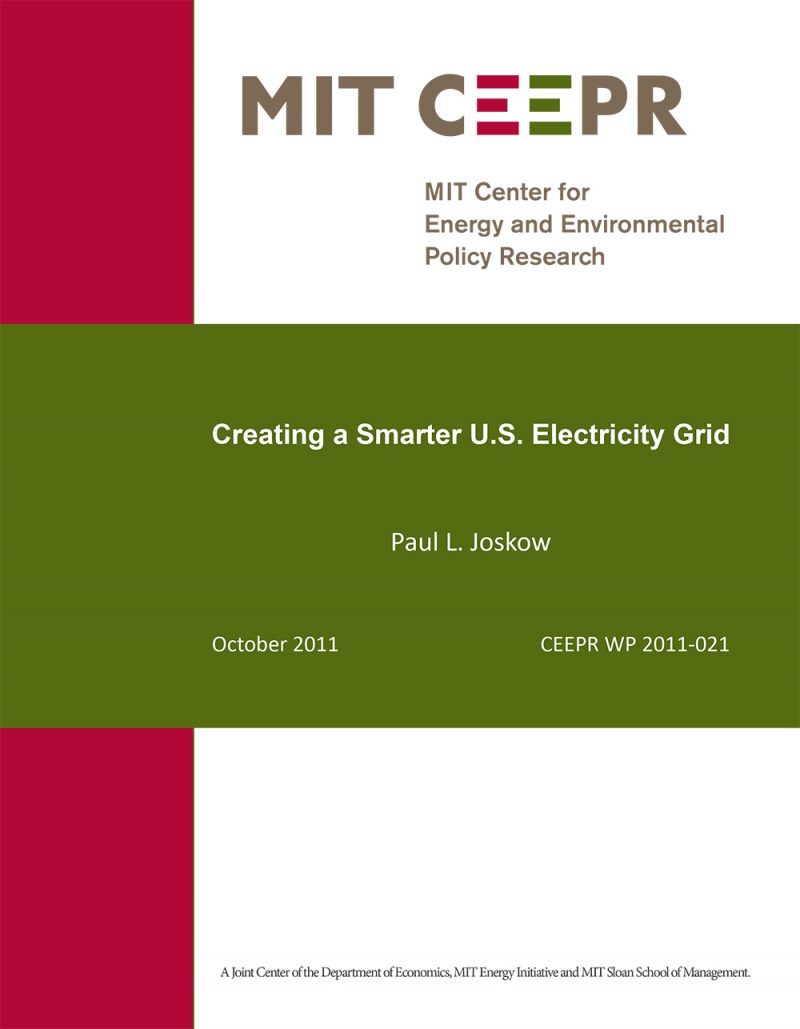Creating a Smarter U.S. Electricity Grid
Paul L. Joskow
October 2011
This paper focuses on efforts to build what policymakers call the “smart grid,” involving 1) improved remote monitoring and automatic and remote control of facilities in high-voltage electricity transmission networks; 2) improved remote monitoring, two-way communications, and automatic and remote control of local distribution networks; and 3) installation of “smart” metering and associated communications capabilities on customer premises so that customers can receive real-time price information and/or take advantage of opportunities to contract with their retail supplier to manage the consumer’s electricity demands remotely in response to wholesale prices and network congestion. I examine the opportunities, challenges, and uncertainties associated with investments in “smart grid” technologies. I discuss some basic electricity supply and demand, pricing, and physical network attributes that are critical for understanding the opportunities and challenges associated with expanding deployment of smart grid technologies. Then I cover issues associated with the deployment of these technologies at the high voltage transmission, local distribution, and end-use metering levels.
JEL Codes: L94; L98; Q41; Q48



